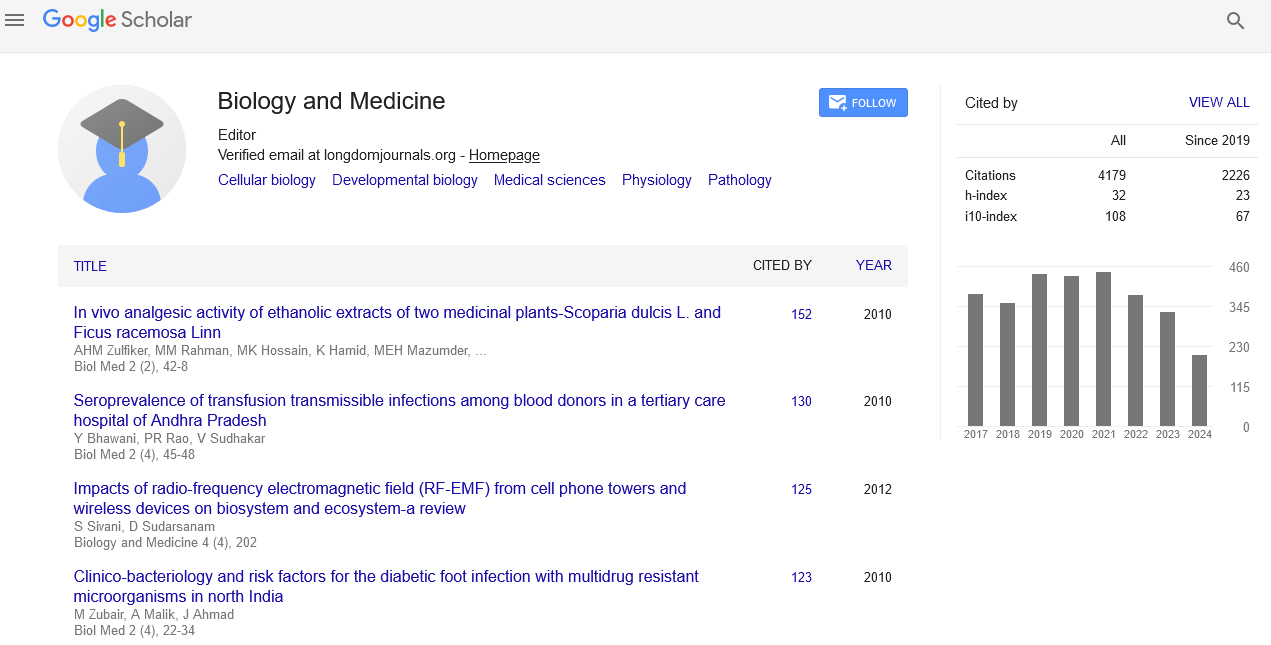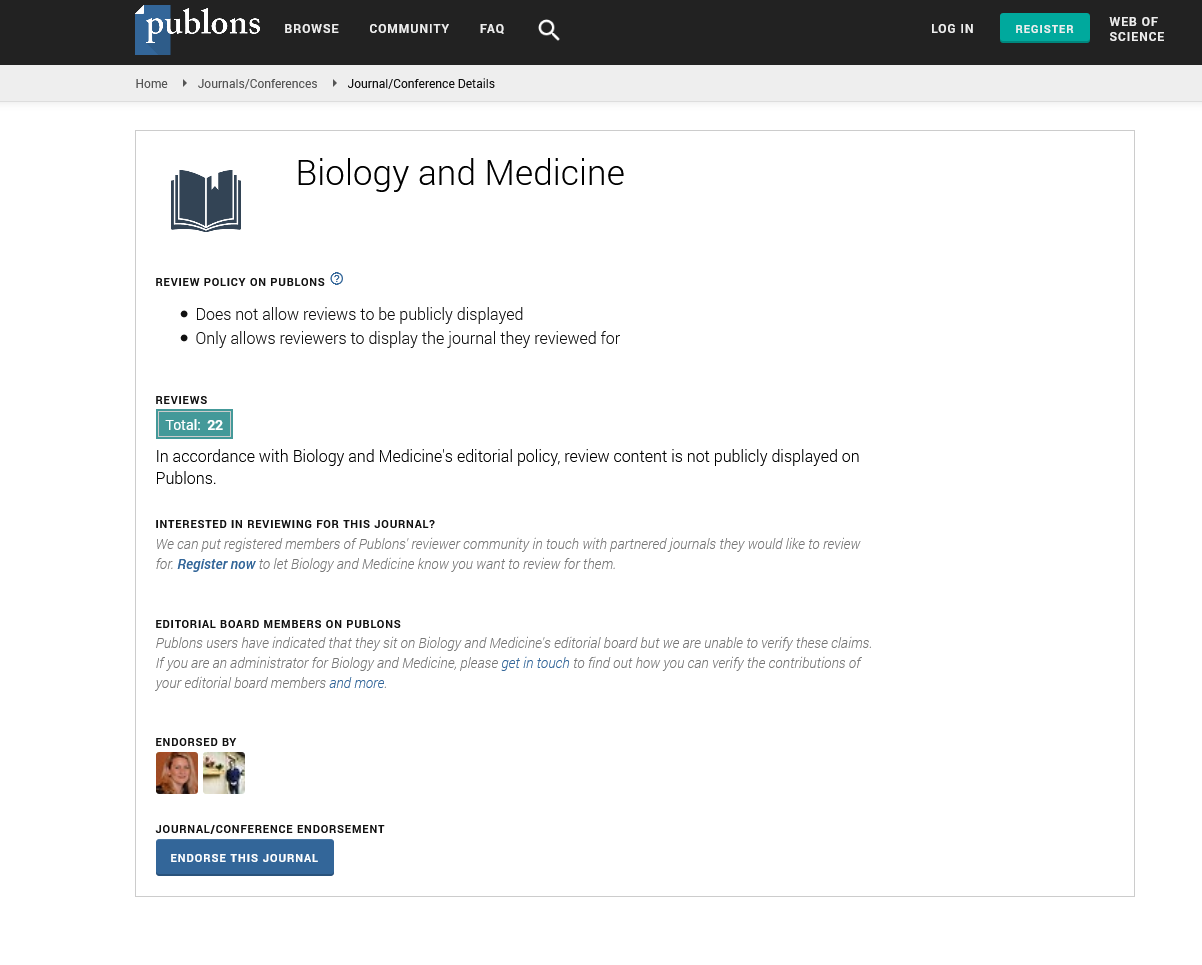Indexed In
- Open J Gate
- Genamics JournalSeek
- CiteFactor
- Cosmos IF
- Scimago
- Ulrich's Periodicals Directory
- Electronic Journals Library
- RefSeek
- Hamdard University
- EBSCO A-Z
- Directory of Abstract Indexing for Journals
- OCLC- WorldCat
- Proquest Summons
- Scholarsteer
- ROAD
- Virtual Library of Biology (vifabio)
- Publons
- Geneva Foundation for Medical Education and Research
- Google Scholar
Useful Links
Share This Page
Journal Flyer

Open Access Journals
- Agri and Aquaculture
- Biochemistry
- Bioinformatics & Systems Biology
- Business & Management
- Chemistry
- Clinical Sciences
- Engineering
- Food & Nutrition
- General Science
- Genetics & Molecular Biology
- Immunology & Microbiology
- Medical Sciences
- Neuroscience & Psychology
- Nursing & Health Care
- Pharmaceutical Sciences
Opinion Article - (2024) Volume 16, Issue 1
Advancements in DNA Repair Mechanisms and Therapeutic Implications
Michael Marty*Received: 27-Dec-2023, Manuscript No. BLM-24-24736; Editor assigned: 29-Dec-2023, Pre QC No. BLM-24-24736(PQ); Reviewed: 12-Jan-2024, QC No. BLM-24-24736; Revised: 19-Jan-2024, Manuscript No. BLM-24-24736(R); Published: 29-Jan-2024, DOI: 10.35248/0974-8369.23.16.640
Description
DNA is susceptible to various forms of damage, from environmental assaults to internal errors during replication. To counteract this constant threat, cells have evolved elaborate DNA repair mechanisms. Recent advances in understanding of these repair pathways not only deepen molecular studies within the cells but also hold significant therapeutic promise. DNA repair is a multifaceted process involving a symphony of molecular players and intricate pathways. The classical pathways, such as Base Excision Repair (BER), Nucleotide Excision Repair (NER), and Mismatch Repair (MMR), have been extensively studied and form the backbone of cellular defense against DNA damage. Advances in molecular biology and genomics have unveiled additional layers of complexity within these pathways. The interplay between BER and NER has been elucidated, revealing a coordinated effort to address various types of DNA lesions. The discovery of these intricate connections provides insights into how cells prioritize and orchestrate repair efforts, ensuring genomic stability.
Homologous Recombination (HR) is a high-fidelity repair mechanism crucial for mending double-strand breaks, one of the most severe forms of DNA damage. Recent breakthroughs have illuminated the molecular choreography underlying HR, showcasing the precision with which cells execute this repair. The identification of BRCA1 and BRCA2 as central players in HR not only deepens our understanding of hereditary cancers but also opens avenues for targeted therapies. Exploiting the vulnerabilities in HR-deficient tumors has led to the development of PARP inhibitors, a groundbreaking class of drugs that capitalize on synthetic lethality. This therapeutic strategy, born from a profound comprehension of DNA repair mechanisms, represents a paradigm shift in cancer treatment. DNA repair is not a solitary endeavor but a collaborative effort involving checkpoint kinases that act as guardians of the genome. Recent strides in our understanding of these kinases, such as ATM, ATR, and CHK1, have uncovered their pivotal roles in orchestrating the cellular response to DNA damage.
Checkpoint kinases govern cell cycle progression, ensuring that damaged DNA is repaired before cells proceed to division. The therapeutic implications are profound, as modulating these kinases presents opportunities to enhance the efficacy of DNAdamaging treatments in cancer therapy. Combination therapies that involve DNA-damaging agents and checkpoint kinase inhibitors are being explored to selectively target cancer cells while sparing normal tissues. The revolutionary CRISPR-Cas9 technology has not only transformed the landscape of genome editing but also opened new avenues in DNA repair research. By harnessing the bacterial immune system, scientists have engineered a powerful tool that allows precise modifications to the DNA sequence. CRISPR-based approaches enable the targeted correction of disease-causing mutations and hold promise for treating genetic disorders.
The advances in understanding DNA repair mechanisms extend far beyond the fields of basic science. They are translating into tangible therapeutic strategies with the potential to revolutionize medicine. PARP inhibitors, as mentioned earlier, exemplify the successful translation of DNA repair research into the clinic, offering targeted treatment for specific types of cancers. Expanding our therapeutic arsenal, ongoing research explores the modulation of DNA repair pathways to sensitize cancer cells to conventional treatments. Combination therapies that leverage the vulnerabilities of DNA repair-deficient tumors hold promise for enhanced treatment outcomes and reduced side effects.
Moreover, the emerging field of immunotherapy intersects with DNA repair research. The intricate relationship between DNA damage, repair, and the immune system is being explored to develop immunotherapeutic strategies that harness the body's own defenses against cancer. While the progress in DNA repair research is promising, challenges remain. Resistance to DNAdamaging treatments, acquired through alterations in repair pathways, underscores the adaptability of cancer cells. Overcoming this challenge requires a deeper understanding of the dynamic interplay between DNA repair mechanisms and the evolving cancer genome. Future research directions include unraveling the complexities of alternative DNA repair pathways, understanding the influence of epigenetic modifications on repair processes, and refining strategies for precision genome editing. Moreover, addressing the ethical implications of genome editing technologies like CRISPR is paramount as we venture further into the era of personalized medicine.
Citation: Marty M (2024) Advancements in DNA Repair Mechanisms and Therapeutic Implications. Bio Med. 16:640.
Copyright: © 2024 Marty M. This is an open-access article distributed under the terms of the Creative Commons Attribution License, which permits unrestricted use, distribution, and reproduction in any medium, provided the original author and source are credited.


